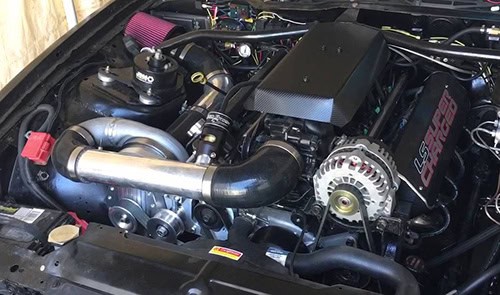5.7 Hemi Challenger Supercharger FAQ

How does a supercharger work?
A supercharger pressurizes the air intake to a higher pressure than that of the ambient air. It’s comparable to a turbocharger, but rather than being driven by the crankshaft via a belt or chain, it is powered by the engine’s shaft.
What is the difference between supercharger and turbocharger?
A supercharger’s energy source is different from that of a turbocharger. A turbocharger is fed by exhaust gases that are pushing a turbine. Superchargers are driven by a belt or chain from the engine’s crankshaft and are powered by mechanical energy.
How much horsepower does a supercharger add?
A supercharger can improve the power output of a car’s engine by between 30 and 50% (on average), but it causes a 46 percent boost in overall performance. As a result, you may anticipate your horsepower to rise as well.
How much faster does a supercharger make your car?
A supercharger won’t always make your vehicle faster, but it can help with acceleration.
Are superchargers worth the money?
There are a few things to remember about superchargers. They may boost the horsepower of your engine, and they can make your car seem like it has a larger, more powerful engine under the hood. But there are drawbacks as well, including increased power consumption and greater engine strain, Best Supercharger for 5.7 Hemi Challenger.
Final Words
It’s only natural to desire more power in your mechanical 5.7 engine. Especially when it’s a 5.7 Hemi Challenger, upgrades are necessary. Otherwise, you’ll be out of luck. Anyway, making a decision on how to accomplish it is complicated because there are so many variables to consider. So we hope that our short essay has been of assistance in this area for you .